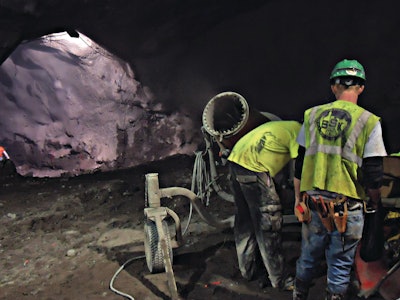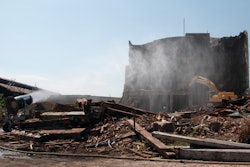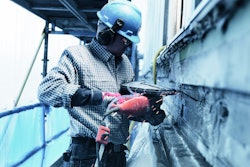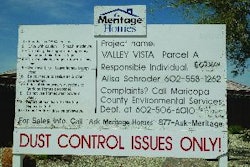
Controlling dust as they blast rock to make way for the 2nd Avenue Subway under Manhattan's upper east side would normally cost SSK Constructors as much as $1 million per year in labor. But four dust-suppression machines from Dust Control Technology are doing the job for the joint venture at a fraction of the cost.
SSK Constructors (Schiavone/Shea/Kiewit), one of New York's leading heavy construction firms, is completing a $469 million contract for rough-in work for the 2nd Avenue Subway Project. It includes demolition of existing buildings to construct the station entrances and ancillaries, mining the 72nd Street Station Cavern, and cutting shafts and adits for entrances and ancillaries. It also involves mining the G3/G4 tunnel to connect the 72nd Street Station to the existing stub tunnels at 63rd Street.
The work is all part of a planned $4.45 billion expansion of the New York City Subway System. Currently, the lone rapid transit option on the upper east side is the IRT Lexington Avenue line, the most crowded in the nation. Expected to open in 2016, construction of the 2nd Ave. line will add two tracks to help alleviate that congestion.
"The technique we're using is drilling and blasting, which is an effective way to dislodge large volumes of material at a time," says Frank Townsend, SSK project coordinator. "The potential drawback is that it creates dust and smoke, and since this is one of the busiest sections of the city, we knew we had to find an effective control method."
Strategic dust control
SSK Constructors is a joint venture consisting of Schiavone Construction Co., J.F. Shea Construction Co. and Kiewit Corporation. The partners have been building and rehabilitating bridges, highways, secondary roads and subway systems for more than fifty years.
Like most contractors, SSK's excavation crews had relied primarily on manual spraying with fire hoses to keep dust down in the past. "That's a labor-intensive approach, often requiring several workers at a time, and it's not as efficient," Townsend notes.
At a $100,000 estimated annual cost per worker in New York City (counting benefits and insurance), SSK faced spending as much as $1 million per year to control dust.
"When we blast, a tremendous amount of energy is released," Townsend points out. "The force carries the dust away from the shot, and if not contained, it would find its way out the tunnel and up the shafts, which could take it out to the street."
After investigating several equipment options, SSK decided to purchase four machines from Dust Control Technology. The suppression equipment at the 2nd Ave. site is strategically positioned to maximize droplet exposure to airborne dust particles and increase hang time.
Crews set up the DustBoss machines pointed in the same direction as the blast force travel, with two stationed at each of the vertical shafts. "By aiming the DustBoss units along the path that the dust will travel, we give the atomized mist more time to collide with dust particles and drive them to the ground," Townsend explains.
Three of the machines are DustBoss DB-60s, with 30 specially designed brass nozzles to atomize water into droplets 50 to 200 microns in size -- optimum for particle attraction. Launched by a 25-hp fan that generates 30,000 cfm, the atomized spray has a range of more than 200 ft., yet the carriage-mounted device is completely portable, allowing it to be relocated easily.
The fourth machine is a DustBoss DB-30, a smaller unit that's well suited to confined spaces. Also mounted on a wheeled carriage, it has a 7.5-hp motor that generates 9,200 cfm, and like its bigger cousin, it features a ring of brass nozzles to atomize water to the most effective spray.
"The DustBoss units have had a big impact on this project," Townsend asserts. "Our air monitoring systems confirm the significant dust reduction. The equipment has been so successful that we're in the process of purchasing a fifth unit to use for demolition."



















